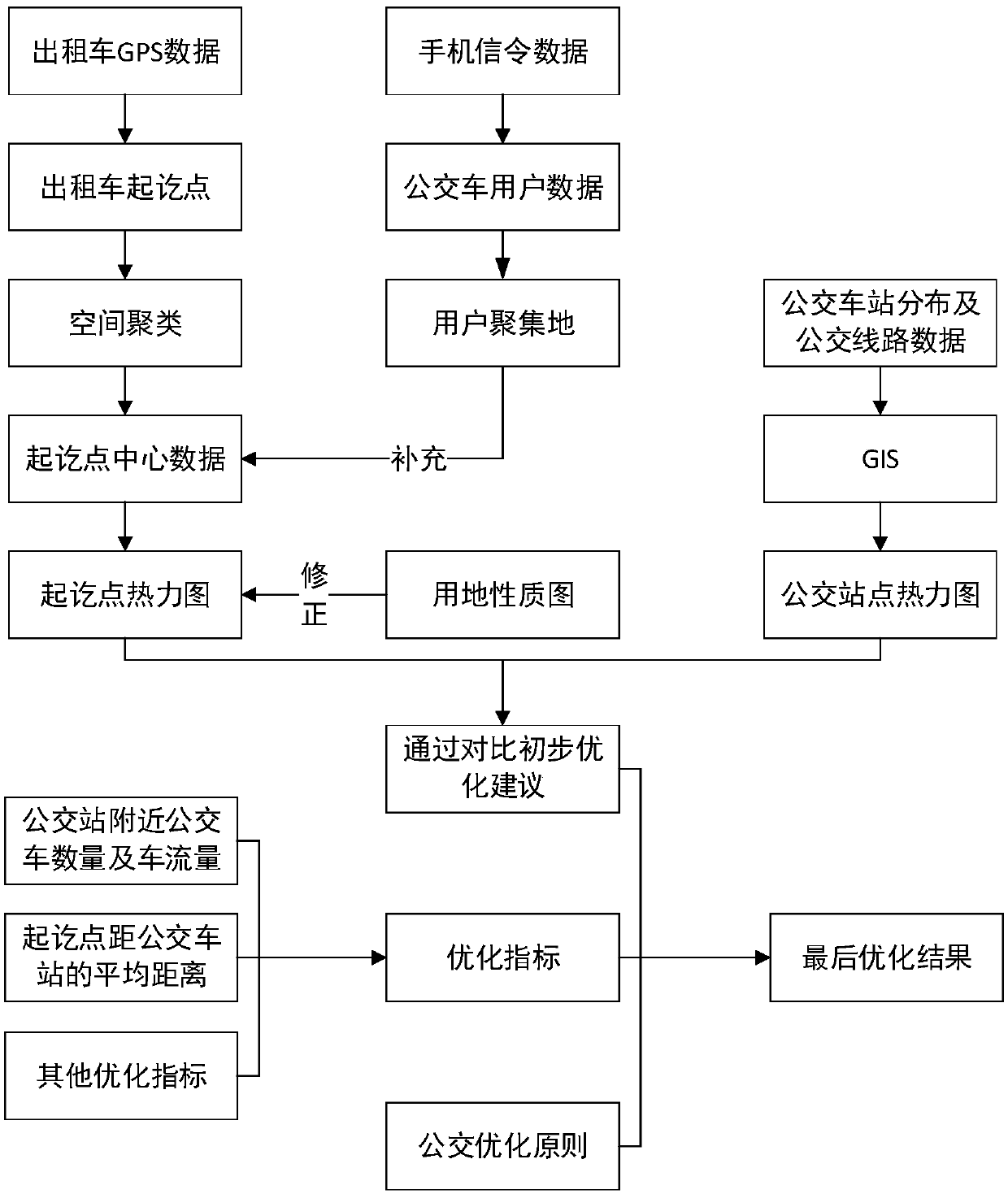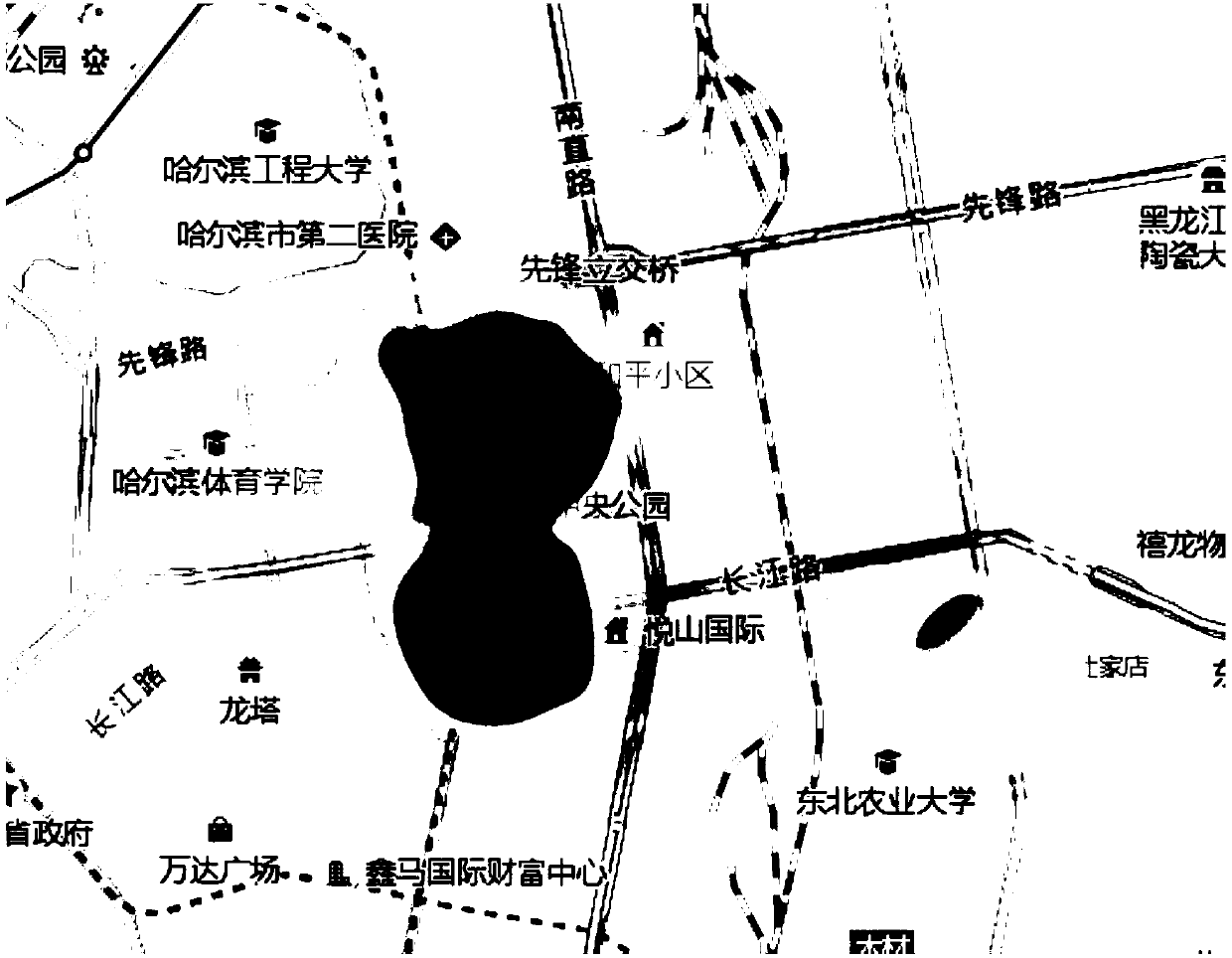Bus line optimizing method based on taxi GPS data and mobile phone signaling data
A technology of GPS data and mobile phone signaling, applied in data processing applications, computer components, forecasting, etc., can solve problems such as unreasonable bus line settings, low bus line operation efficiency, and inability to meet demand well, and achieve bus operation High efficiency, saving manpower and material resources, strong representative effect
- Summary
- Abstract
- Description
- Claims
- Application Information
AI Technical Summary
Problems solved by technology
Method used
Image
Examples
specific Embodiment approach 1
[0033] Specific implementation mode one: combine figure 1 Describe the present embodiment, a kind of bus line optimization method based on taxi GPS and mobile phone signaling data of the present embodiment concrete process is:
[0034] The method is a bus line optimization method based on vehicle GPS data and mobile phone GPS data. On the one hand, the existing mobile phone signaling data is obtained, and at the same time, the start and end points of taxi travel are integrated and clustered to obtain the distribution map of travel demand points. On the other hand, the GPS data of other vehicles or the traffic flow information of the road are obtained to facilitate the evaluation of the smoothness of bus travel. In addition, it is necessary to obtain the route and station layout information of the current bus operation.
[0035] Line optimization is performed based on the above information. Match and fit the thermal distribution map of travel demand points generated by integ...
specific Embodiment approach 2
[0057] Specific implementation mode two: the difference between this implementation mode and specific implementation mode one is: the identification of origin and destination in the step two one; the specific process is:
[0058] Identify according to the status information and instantaneous vehicle speed in the GPS data, first identify the instantaneous speed as 0 o'clock, and then identify whether the vehicle status in the GPS data is in the passenger-carrying state when the same vehicle speed is 0; if the status value is 0, then it is Empty driving state, 1 is the passenger loading state, changing from 1 to 0 is the unloading state, this point is the destination point, and the state value changes from 0 to 1 is the passenger loading state, this point is the starting point, and the starting and ending point of the trip will be Identify and serve as the basis for visualization.
[0059] Other steps and parameters are the same as those in Embodiment 1.
specific Embodiment approach 3
[0060] Specific embodiment three: the difference between this embodiment and specific embodiment one or two is that in the step two or three, the starting and ending points are clustered using DBSCAN or K-Means clustering algorithm to obtain the clustering result, according to the clustering result Get the heat map of origin and destination distribution; the specific process is:
[0061] Commonly used clustering algorithms are DBSCAN, K-Means and other spatial clustering algorithms, which can be used in matlab, pathon, SPSS and R languages. Generally, the clustering can be realized by calling the clustering program directly. The specific steps are as follows. In this case, the K-Means algorithm is used as an example to implement it using matlab.
[0062] The steps of the K-Means algorithm are as follows:
[0063] 1) Randomly select K initial centroids
[0064] 2) Calculate the distances from all samples to the K centroids respectively
[0065] 3) If the sample is closest t...
PUM
 Login to View More
Login to View More Abstract
Description
Claims
Application Information
 Login to View More
Login to View More - R&D
- Intellectual Property
- Life Sciences
- Materials
- Tech Scout
- Unparalleled Data Quality
- Higher Quality Content
- 60% Fewer Hallucinations
Browse by: Latest US Patents, China's latest patents, Technical Efficacy Thesaurus, Application Domain, Technology Topic, Popular Technical Reports.
© 2025 PatSnap. All rights reserved.Legal|Privacy policy|Modern Slavery Act Transparency Statement|Sitemap|About US| Contact US: help@patsnap.com



